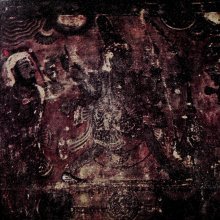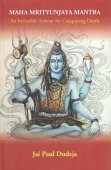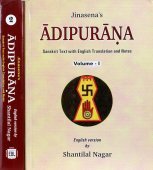Yajurveda, Yajur-Veda, Yajus-veda: 15 definitions
Introduction:
Yajurveda means something in Hinduism, Sanskrit, Marathi, Hindi. If you want to know the exact meaning, history, etymology or English translation of this term then check out the descriptions on this page. Add your comment or reference to a book if you want to contribute to this summary article.
Alternative spellings of this word include Yajurved.
Images (photo gallery)
In Hinduism
Purana and Itihasa (epic history)
Source: archive.org: Puranic EncyclopediaYajurveda (यजुर्वेद).—General. The Caturvedas are:—Ṛgveda, Yajurveda Sāmaveda and Atharvaveda. Viṣṇu Purāṇa, Part 3, Chapter 5, mentions that Vaiśampāyana, the disciple of Vedavyāsa, divided Yajurveda into twentyseven branches and taught them to his disciples. Among those disciples there was Yājñavalkya, the son of Brahmarāta. It was Vyāsa who divided the Vedas into four parts. After dīviding them, the sage Vyāsa taught Ṛgveda to Paila, Yajurveda to Vaiśampāyana, Sāmaveda to Jaimini and Atharvaveda to Sumantu.
The rules for Japa, Homa etc. of Yajurveda were taught to Vyāsa by Agnideva. If all the rules of Yajurveda are correctly observed, all desires will be fulfilled. There are special rules for the observance of homa for the fulfilment of particular desires. (See full article at Story of Yajurveda from the Puranic encyclopaedia by Vettam Mani)
Source: Cologne Digital Sanskrit Dictionaries: The Purana IndexYajurveda (यजुर्वेद).—See Yajus;1 divided into four parts from which originated yajña, performed by four orders of priests —adhvaryu to recite yajus, hota, the rks, and udgāta, the sāman, and Brahmā, the atharvamantras,2 its śākhas are 27; arranged by Vaiśampāyana, pupil of Vyāsa, and taught to his disciples including Yājñavalkya; the latter was made to vomit for his behaviour, all the texts, which the other disciples digested, in the form of partridges and hence this portion came to be known as Taittirīya; but Yājñavalkya prayed to the Sun-god who initiated him into the other portions of the Yajus in the form of a horse and hence called Vājaseneya;3 part of Viṣṇu.4
- 1) Brahmāṇḍa-purāṇa II. 34. 14-18: Matsya-purāṇa 93. 129; 133. 31. Vāyu-purāṇa 26. 20. 60. 14, 17, 22; 61. 5-8; 65. 25.
- 2) Viṣṇu-purāṇa III. 4. 8-12.
- 3) Ib. III. ch. 5 (whole).
- 4) Ib. V. 1. 37.

The Purana (पुराण, purāṇas) refers to Sanskrit literature preserving ancient India’s vast cultural history, including historical legends, religious ceremonies, various arts and sciences. The eighteen mahapuranas total over 400,000 shlokas (metrical couplets) and date to at least several centuries BCE.
Dhanurveda (science of warfare)
Source: Knowledge Traditions & Practices of India: Martial Arts Traditions: A SurveyYajurveda (यजुर्वेद) is the name of a Sanskrit text partly dealing with the ancient Indian science of martial arts (dhanurveda).—Yajurveda highlights the importance of the science of archery and praises those who are well versed in it.

Dhanurveda (धनुर्वेद) refers to the “knowledge of warfare” and, as an upaveda, is associated with the Ṛgveda. It contains instructions on warfare, archery and ancient Indian martial arts, dating back to the 2nd-3rd millennium BCE.
Languages of India and abroad
Marathi-English dictionary
Source: DDSA: The Molesworth Marathi and English Dictionaryyajurvēda (यजुर्वेद).—m (S) The name of the second of the four Vedas.
Source: DDSA: The Aryabhusan school dictionary, Marathi-Englishyajurvēda (यजुर्वेद).—m The name of the second Veda.
Marathi is an Indo-European language having over 70 million native speakers people in (predominantly) Maharashtra India. Marathi, like many other Indo-Aryan languages, evolved from early forms of Prakrit, which itself is a subset of Sanskrit, one of the most ancient languages of the world.
Sanskrit dictionary
Source: DDSA: The practical Sanskrit-English dictionaryYajurveda (यजुर्वेद).—the second of the three (or four, including the Atharvaveda) principal Vedas, which is a collection of sacred texts in prose relating to sacrifices; it has two chief branches or recensions :-the तैत्तिरीय (taittirīya) or कृष्ण- यजुर्वेद (kṛṣṇa- yajurveda) and बाजसनेयी (bājasaneyī) or शुक्लयजुर्वेद (śuklayajurveda).
Derivable forms: yajurvedaḥ (यजुर्वेदः).
Yajurveda is a Sanskrit compound consisting of the terms yajus and veda (वेद).
Source: Cologne Digital Sanskrit Dictionaries: Shabda-Sagara Sanskrit-English DictionaryYajurveda (यजुर्वेद).—n.
(-daṃ) The Yajur-Veda: see the next. E. yajus, veda a Veda.
Source: Cologne Digital Sanskrit Dictionaries: Cappeller Sanskrit-English DictionaryYajurveda (यजुर्वेद).—[masculine] the Veda of the Yajus or sacrificial texts.
Source: Cologne Digital Sanskrit Dictionaries: Aufrecht Catalogus CatalogorumYajurveda (यजुर्वेद) as mentioned in Aufrecht’s Catalogus Catalogorum:—Paris. (Tel. 49). Rādh. 2. Oppert. 718. 2146. 2198. 2199. 2200. 2203. 2410. 3343. 4438. 4950. 5134. 6413. 7115. 7145. 7367. Ii, 212. 405. 578. 769. 771. 843. 844. 1415. 1416. 1502. 1503. 1795. 1882. 1938. 2350. 2351. 2373. 2572. 2699. 2700. 2849. 3355. 3447. 3468. 3525. 3759. 4343. 4857. 5248. 5249. 5349. 5350. 5549. 5640. 5695. 6030. 6385. 6689. 6690. 7197. 7198. 7264. 7325. 7429. 7713. 7906. 7970. 7971. 8465. 8681. 8927. 9501. 9643. 9745. 9747. 10060. 10348.
—[commentary] Rādh. 2. Oppert. 7369. 8182 (prathamakāṇḍa). 8181 (kāṇḍatraya).
Yajurveda (यजुर्वेद):—[=yajur-veda] [from yajur > yaj] m. ‘the sacrificial Veda’, the collective body of sacred Mantras or texts which constitute the Yajur-veda (these Mantras, though often consisting of the prose Yajus, are frequently identical with the Mantras of the Ṛg-veda, the Yajur-veda being only a sort of sacrificial prayer-book for the Adhvaryu priests formed out of the Ṛg-veda, which had to be dissected and rearranged with additional texts for sacrificial purposes; the most characteristic feature of the Yajur-veda is its division into two distinct collections of texts, the Taittirīya-saṃhitā and the Vājasaneyi-saṃhitā q.v.; the former of which is also called Kṛṣṇa id est. ‘Black’, because in it the Saṃhitā and Brāhmaṇa portions are confused; and the latter Śukla id est. ‘White’, because in this, which is thought the more recent of the two recensions, the Saṃhitā is cleared from confusion with its Brāhmaṇa and is as it were white or orderly; the order of sacrifices, however, of both recensions is similar, two of the principal being the Darśa-pūrṇa-māsa or sacrifice to be performed at new and full moon, and the Aśva-medha or horse-sacrifice; cf. [Indian Wisdom, by Sir M. Monier-Williams 6; 245 n. 2]), [Brāhmaṇa; Gṛhya-sūtra and śrauta-sūtra; Manu-smṛti etc.]
[Sanskrit to German]
Sanskrit, also spelled संस्कृतम् (saṃskṛtam), is an ancient language of India commonly seen as the grandmother of the Indo-European language family (even English!). Closely allied with Prakrit and Pali, Sanskrit is more exhaustive in both grammar and terms and has the most extensive collection of literature in the world, greatly surpassing its sister-languages Greek and Latin.
Hindi dictionary
Source: DDSA: A practical Hindi-English dictionaryYajurveda (यजुर्वेद) [Also spelled yajurved]:—(nm) the third of the four vedas; ~[dī] an adherent/scholar of the [yajurveda].
...
Kannada-English dictionary
Source: Alar: Kannada-English corpusYajurvēda (ಯಜುರ್ವೇದ):—[noun] one of the four Vedic samhitas, which consists of hymns, used in performing sacrifices, and also of prose.
Kannada is a Dravidian language (as opposed to the Indo-European language family) mainly spoken in the southwestern region of India.
Nepali dictionary
Source: unoes: Nepali-English DictionaryYajurveda (यजुर्वेद):—n. 'Knowledge of Sacrificial Ritual' one of the four Vedas; third of the Vedas, which focuses on liturgical functions; derived from the Sanskrit word 'yaj' meaning sacrifice;
Nepali is the primary language of the Nepalese people counting almost 20 million native speakers. The country of Nepal is situated in the Himalaya mountain range to the north of India.
See also (Relevant definitions)
Partial matches: Yajur, Yajus, Veda, Veta.
Starts with (+5): Yajurvedabhashya, Yajurvedabrahmana, Yajurvedajatavali, Yajurvedakriyasvaralakshana, Yajurvedalakshana, Yajurvedamanjari, Yajurvedamantra, Yajurvedamantrasamhitasukhabodhana, Yajurvedapada, Yajurvedaranyaka, Yajurvedarnava, Yajurvedasamhita, Yajurvedasamhitabrahmana, Yajurvedasamhitanukramanika, Yajurvedasamhitanuvaka, Yajurvedasamhitapratikavali, Yajurvedasaptalakshana, Yajurvedashakha, Yajurvedashirvada, Yajurvedashraddha.
Ends with: Krishnayajurveda, Taittiriyayajurveda.
Full-text (+441): Taittiriya, Yajusha, Adhvaryu, Krishnayajurveda, Vaishampayana, Trinaciketa, Veda, Adhvaryava, Rigyajush, Trisuparṇa, Stirvi, Orimika, Dhaushya, Adhvaryuveda, Ithimika, Mantrarshadhyaya, Maitrayaniya, Yajussu, Yajurvedapada, Yajurvedamanjari.
Relevant text
Search found 143 books and stories containing Yajurveda, Yajur-veda, Yajurvēda, Yajus-veda; (plurals include: Yajurvedas, vedas, Yajurvēdas). You can also click to the full overview containing English textual excerpts. Below are direct links for the most relevant articles:
Women in the Atharva-veda Samhita (by Pranab Jyoti Kalita)
2. The Atharvaveda, an Introduction < [Chapter 1 - The Atharvaveda and its importance in the Vedic Literature]
3. Different Names of the Atharvaveda < [Chapter 1 - The Atharvaveda and its importance in the Vedic Literature]
6. Importance of the Atharvaveda in the Vedic Literature < [Chapter 1 - The Atharvaveda and its importance in the Vedic Literature]
Mundaka Upanishad with Shankara’s Commentary (by S. Sitarama Sastri)
Social Message of the Upanishads (by Sanchita Kundu)
The Agni Purana (by N. Gangadharan)
Chapter 271 - The different recensions of the Vedas (śākha)
Chapter 329 - An abridgement of rules of prosody relating to the Vedic metres
Chapter 150 - Names of different Manus, different Sages and others
The Brahmanda Purana (by G.V. Tagare)
Chapter 33 - Characteristics of Sages and of Mantras < [Section 2 - Anuṣaṅga-pāda]
Chapter 35 - The legend of Yājñavalkya’s receiving the Veda from the Sun-God < [Section 2 - Anuṣaṅga-pāda]
Chapter 34 - Vyāsa and the Line of his Disciples < [Section 2 - Anuṣaṅga-pāda]
Rivers in Ancient India (study) (by Archana Sarma)
4. The river Sindhu in the Ṛgveda-saṃhitā < [Chapter 2 - The Rivers in the Saṃhitā Literature]
2(a). The river Sarasvatī in the Vājasaneyī-saṃhitā (Introduction) < [Chapter 2 - The Rivers in the Saṃhitā Literature]
1. The Vedic Literature < [Chapter 1 - Introduction]
Related products






